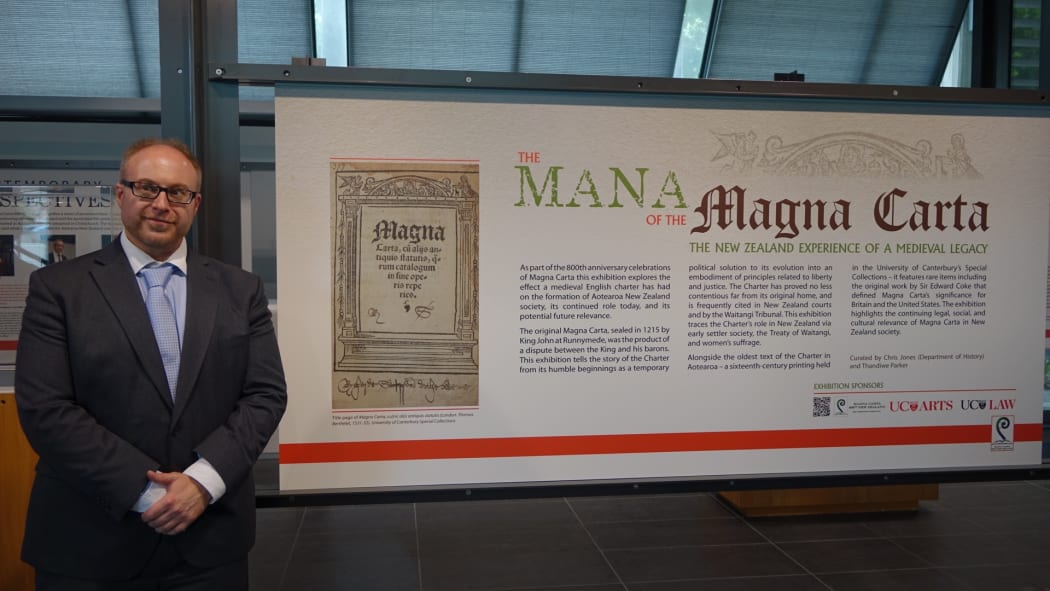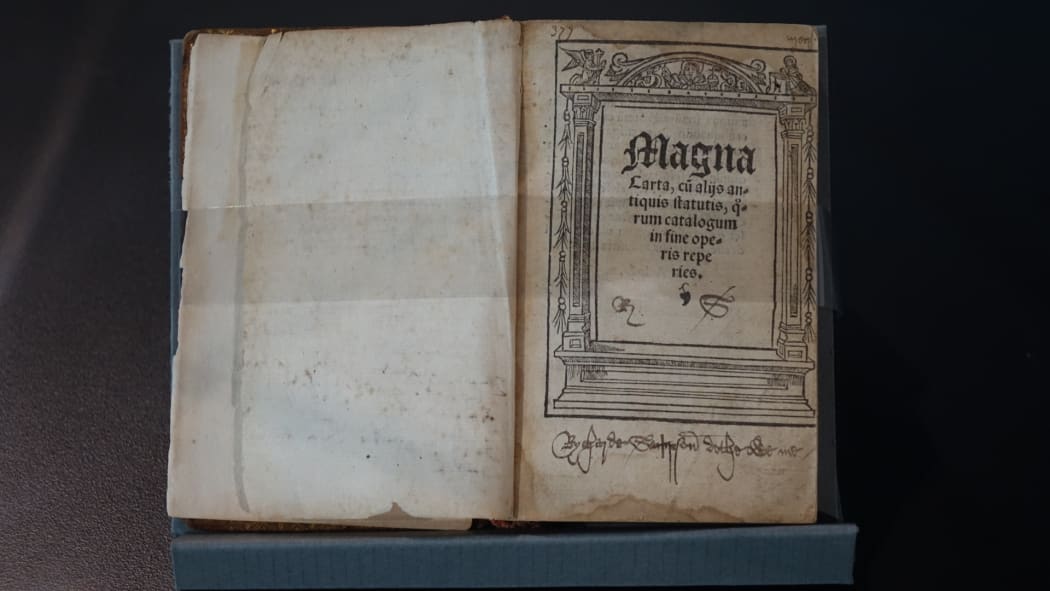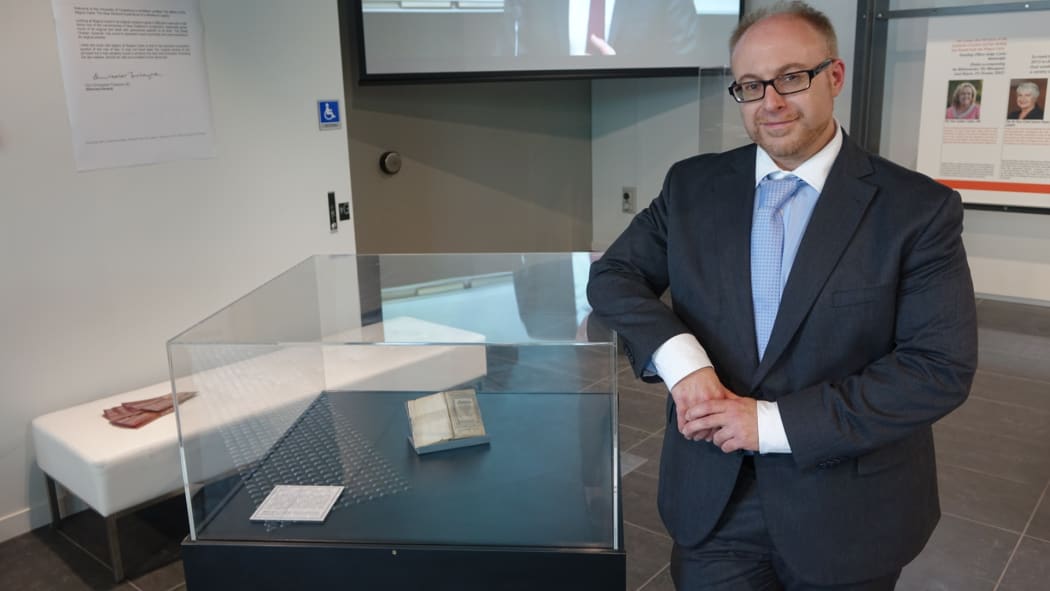New Zealand's oldest copy of the Magna Carta is going on display for the first time, just a month after it was linked to Henry VIII.

Dr Chris Jones is the lead curator of the exhibition 'The Mana of the Magna Carta: The New Zealand Experience of a Medieval Legacy' in Christchurch. Photo: RNZ / Sally Murphy
The pocket-sized copy, which was printed by hand about 1531, is now held at the University of Canterbury.
There are two copies in New Zealand dated before 1600; the other one is held in Auckland.
Senior history lecturer Dr Chris Jones discovered last month the university's copy was originally owned by Richard Sampson, who acted as the king's proctor against Anne Boleyn in 1536.
"It was sitting in a pile of things we have never closely looked at before but, because this year marks the 800th anniversary of the script, we decided to take a closer look."

New Zealand's oldest copies are held at the University of Canterbury (pictured) and the University of Auckland. Photo: RNZ / Sally Murphy
Mr Jones said he was not expecting it to belong to anyone particularly notable - and to discover it belonged to the king's lawyer was extremely exciting.
"This is probably the book he had in his hand, I am certain this is the book he had in his hand when he was prosecuting Anne Boleyn. Sampson is also the man who stood up in parliament and defended the idea of the king as the head of England," Mr Jones said.
A cross has been put through the word 'Sampson' on the book, he said, which showed he marked it when he became a bishop in 1536.
The 1531 copy was shipped to New Zealand by the Canterbury Society in 1852, specifically for those being settled in Christchurch.
"We then think it went to Christ College because there are records of it in their library in 1869, and then somehow it has ended up at the university - but we are not sure how."

Dr Jones stands next to the copy's display cabinet. Photo: RNZ / Sally Murphy
Mr Jones said the discovery was significant, and the university would use the copy to explore the Tudors' history in greater depth.
"Students will be able to relate the book to events which actually took place now, and to events which have been portrayed in movies, so it will spark a lot more interest."
The copy of the Magna Carta is being displayed as part of exhibition 'The Mana of the Magna Carta: The New Zealand Experience of a Medieval Legacy' at the university this week.
What is the Magna Carta?
The Magna Carta was written by a group of 13th century barons to protect their rights and property against a tyrannical king.
It covers many practical matters and specific grievances relevant to the feudal system under which they lived.
The interests of the common man were hardly apparent in the minds of the men who brokered the agreement, but there are two principles expressed in the text that still resonate:
"No freeman shall be taken, imprisoned, disseised, outlawed, banished, or in any way destroyed, nor will We proceed against or prosecute him, except by the lawful judgement of his peers or by the law of the land.
"To no one will We sell, to no one will We deny or delay, right or justice."
- US National Archives and Records Administration


